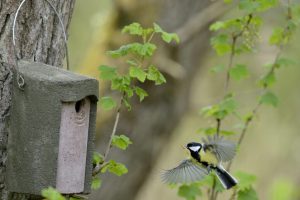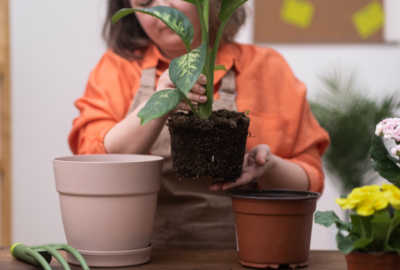Gardening Advice
Nest Boxes
Our gardens and parks are neater and tidier than they used to be meaning British birds are short of natural nesting holes. Plus modern buildings and homes have fewer nooks and crannies for birds to nest in. We can all help by putting nest boxes in our gardens, and enjoy the benefits of watching the different species this will attract as a result.
Where to site your nest box
It’s never too early or late to put up a nest box in your garden. From January onwards, birds are looking for nesting opportunities and deciding where to rear their young. Providing the birds with a safe and comfortable place in which to nest is the highest priority when siting a box. The nest box should be accessible for maintenance, cleaning and inspection.


What kind of nest box?
Different birds like different next boxes, for example sparrows and blue tits like a narrow–holed nest box, robins and wagtails like an open fronted nest box.
Shelter and security are the main requirements of a good nest box. The best ones are made from either wood or woodcrete, a combination of sawdust and concrete. Both provide great insulation, ensuring that eggs and chicks don’t become too hot in the midday sun or too cold at night.
Wood boxes should be made using good quality timber that’s either new or recycled and should come from a renewable source and offer sufficient insulation and prevent warping. You can use a water-based preservative to protect wooden boxes from the elements.
Pic, by permission from: nestboxweek.com
A few nest box tips:
- The entrance should face away from the prevailing wind and rain, and placed out if direct sunlight.
- Boxes should not be located near bird feeders, and large numbers of feeding birds may disturb nesting birds.
- When attaching a box to a tree, angle the front slightly downwards to prevent water from getting in.
- Although many birds will nest low down, it’s best to position your nest box 4-6ft off the ground to reduce the risk from predators such as cats.
- Position the box in a quiet place that a predator would find hard to reach. A metal guard round the entrance also makes it difficult for squirrels and woodpeckers to break in.
- Check that the diameter of a hole fronted box is big enough for the species of birds you are trying to attract.
- Place open fronted robin boxes in thick cover, maybe in a climbing ivy or a think shrub.
Be patient with your box, however if it’s not used for a few years in succession, it may be worth moving to another more suitable location. There are many reasons why a box may not be used such as the presence of natural cavities nearby or the location of territory boundaries. While some boxes may be taken up immediately, some may remain vacant for no apparent reason.
For more information and activities relating to nest boxes, visit the BTO’s website all about Nest Box Week HERE. (link to nestboxweek.com)
Comments are closed








